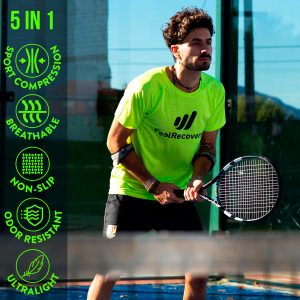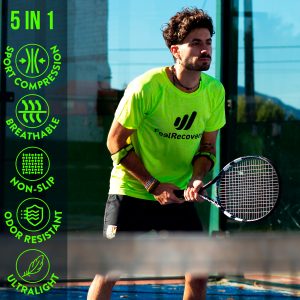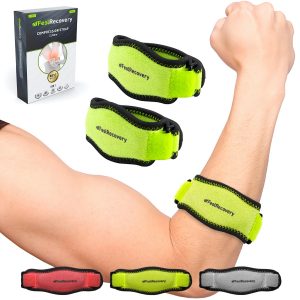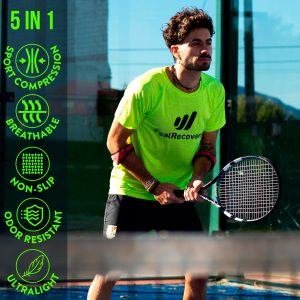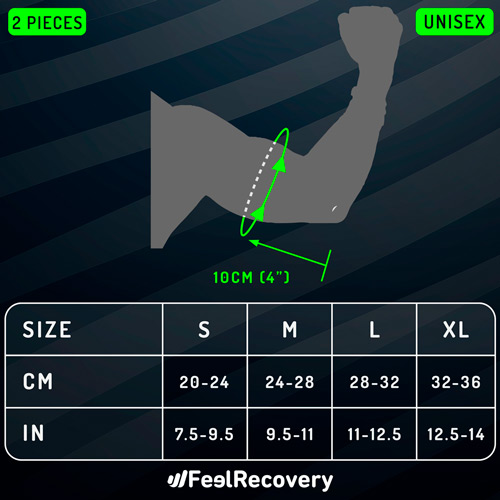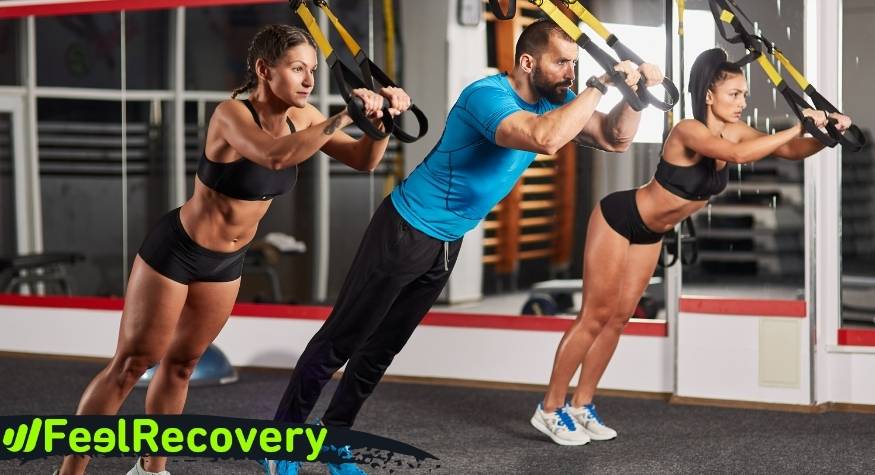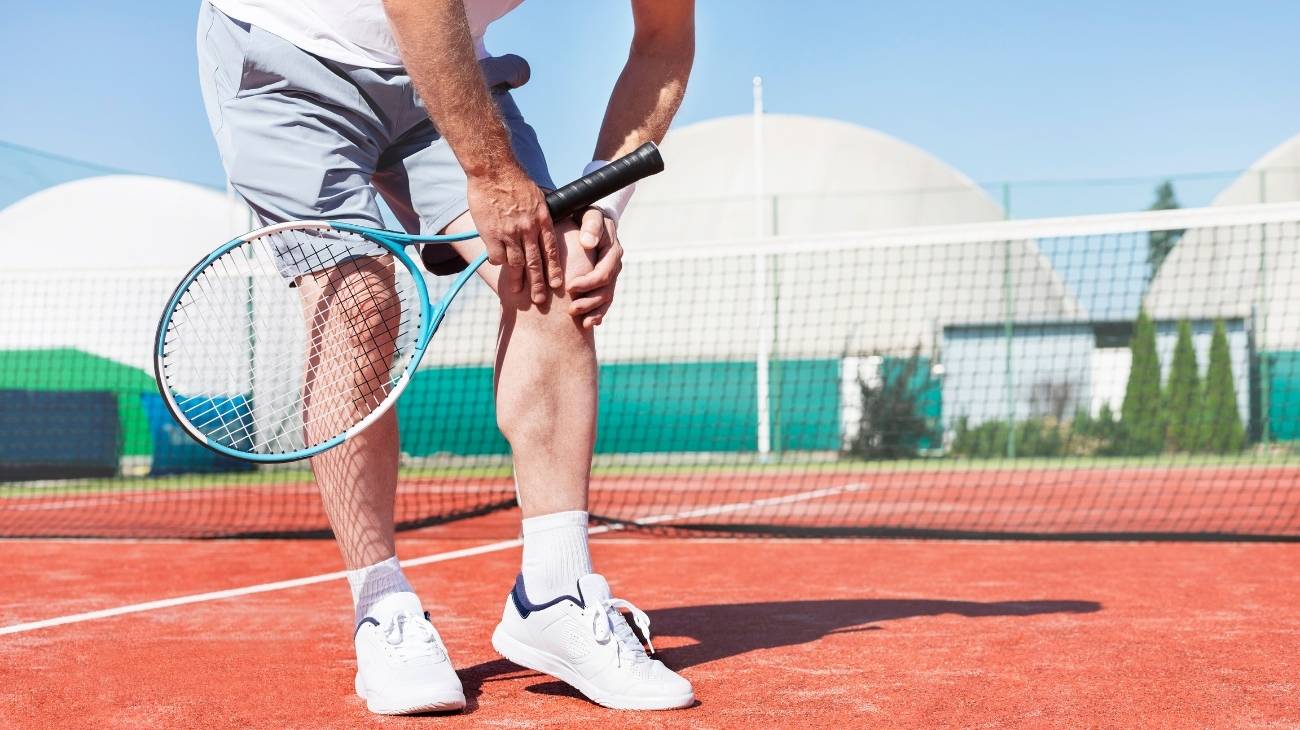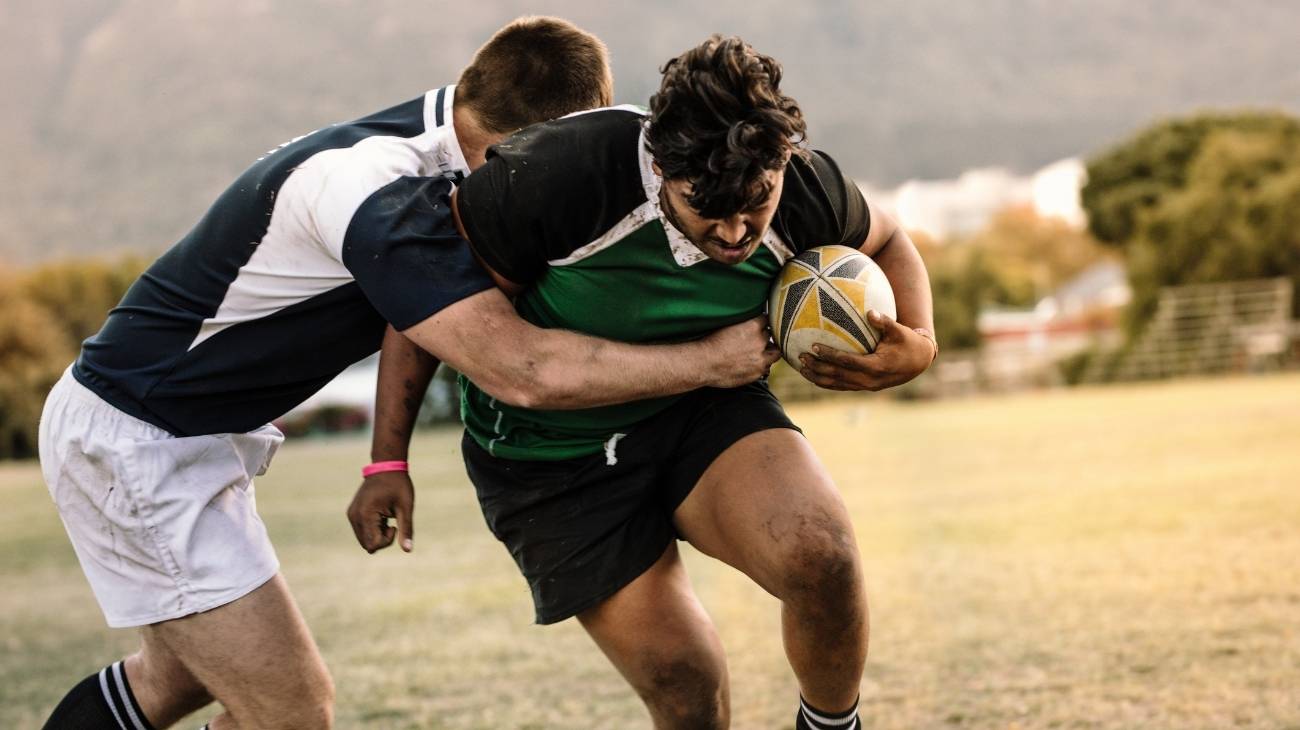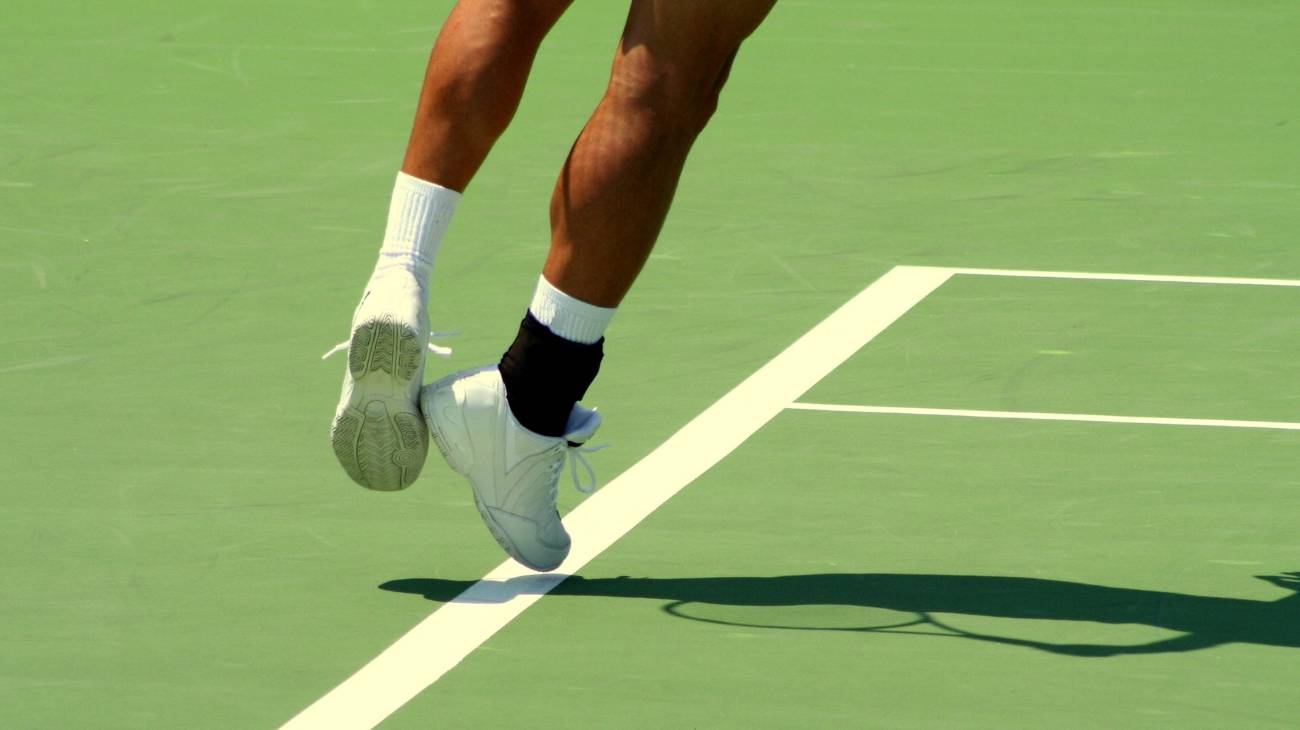The elbows of Crossfit enthusiasts are prone to injury frequently, due to the fact that their joints are responsible for supporting repetitive movements of the arm, body, carrying excess weight and much more.
Therefore, it is common for elbow injuries to appear and one of the most viable options to prevent this is the use of compressive garments. In this article we will be telling you which are the best sports elbow sleeves for Crossfit that you can use for each type of trauma, and the characteristics to take into account to choose the best product, in order to treat and/or prevent any Crossfit injury.
What are the most common elbow injuries when doing Crossfit?
As mentioned above, the elbows are a very important area of the body, as they are responsible for stretching, support the body weight, serve as a support in multiple exercises and more. Repetitive movements are one of the most frequent injuries in Crossfit, due to the fact that they are performed constantly and continuously, although they are not the only ones. Here we will tell you about the most common injuries that are exposed to those who practice this discipline.
Lateral epicondylitis or tennis elbow
One of the most common injuries in crossfitters and in almost every athlete is epicondylitis, or better known as "tennis elbow", which is based on the inflammation of the humeroradialis or ulnar joint. This inflammation is caused by repetitive pronation and supination movements performed by the athlete when the elbow is in extension.
These repeated mobilisations of the elbow are very present in Crossfit weightlifting exercises parallel to the ground, where the arm is rotated upwards (supination) and/or downwards (pronation). What happens here is that the elbow wears down as a result of the muscular overload of the forearm when we perform the exercises incorrectly, due to overuse or very fast and poorly executed repetitions.
Epitrocleitis or golfer's elbow
Epicondylitis is, after epicondylitis, another of the most common conditions in crossfit. Also called "golfer's elbow", it is a disorder triggered by frequent and repeated hyperflexion movements that are too fast, poorly executed, or both. This injury is quite painful because the discomfort occurs in the elbow, along with inflammation, but radiates to the inside of the arm or forearm.
In crossfit, athletes who suffer from epitrochleitis are those who have performed the wrong pronation and supination movements in exercises that involve holding a lot of weight while moving their arms, throwing heavy objects incorrectly when in extension, and carrying too much weight incorrectly. Although it can also appear in very basic exercises such as push-ups and deadlifts.
Valgus and extension overload syndrome
Extensor valgus overload syndrome is another of the most common Crossfit injuries, due to the high mechanical stress produced in the valgus and rapid extension mobilisations performed from the arm. So, if the Crossfitter is performing a flexion movement that will lead to an extension, special care must be taken in each of the phases of both preparation and acceleration where the arm expands and the elbow is open.
Crossfit athletes are exposed to this injury due to the frequency with which they perform exercises in their routines, especially those that require carrying weight on bars or rings and bending the joint to perform aerial flexions. Here, the elbow bears the full weight and force of the body.
Thrower's elbow
This injury is called "thrower's elbow" because of the frequency with which the problem occurs, due to the throwing gesture, and also as a reference to a number of conditions where the joints and elbow joints are involved.
This condition is very common in crossfit, as the elbow is damaged by the incorrect execution of movements that have to do with throwing or the throwing gesture. They also appear due to repeated incorrect execution of this mobility, rotating inwards and outwards with the elbow flexed.
If you are a frequent crossfitter, you should pay attention not to overuse your elbows, and to perform bending and stretching movements with care, especially in quick push-ups, barbell and hoop exercises, and throwing light or heavy objects.
Distal humerus fractures
This injury involves fractures that occur in the distal areas of the humerus, specifically the lower part of the arm bones (humerus) that are also part of the elbow joints, or the portions closest to the forearm bones such as the ulna and radius.
These distal fractures are among the most serious and most common, as they often occur because the crossfitter fell while the arm was still in extension. They also tend to occur because the arm has suffered from a direct application of excessive force that the elbow has not been able to withstand, the elbow is located and consequently ends up fractured. This injury is of a serious nature as it can result in bleeding, rigid immobility of the arm, inability to move the wrist or hand, or even fragmentation of the elbow bones.
Bestseller
What kind of sports elbow braces are best for strength sports injuries?
Elbow injuries are quite common in the world of Crossfit, produced mostly by overuse in this area of the body due to repetitive movements, and incorrect execution of certain exercises where the elbow takes part of the responsibility.
To treat this problem, all kinds of sports elbow braces and compression bands have been designed to help you recover better and faster from any condition, or also serve as a preventative to avoid injuries. Here are some of the best and most recommended on the market.
Elbow compression sleeves
Compression sports elbow sleeves are the most requested and used in the world of crossfit, and this is due to the fact that they are designed with two fundamental aspects in mind: to help you prevent all kinds of injuries, and to treat some of the most common elbow conditions such as epicondylitis or epritocleitis.
These types of garments work by compressing all parts of the elbow, forearm and your biceps to give you the support you need in demanding exercises where the joint has to support part of your body weight (such as push-ups and overhead press-ups) and needs extra support to help it stay firm and in place. These elastic compression elbow straps are very easy to put on and take off, while working to promote your blood circulation and activate the healing process of previous injuries.
Compression straps
Compression sports bands are one of the newest models in the treatment and prevention of elbow injuries. Its simple design and maximum adjustment, gives efficient support as it is placed just after the elbow, which allows it to better resist crossfit exercises, where it is necessary to do a lot of force, support one's own weight, or resist large amounts of weight.
So, these sports elbow compression bands support muscles, tendons, ligaments and joints to help you get better quickly from injuries, relieve aches and pains, and prevent serious and minor ailments. They are excellent allies in crossfit, because they provide the elbow with tight, taut compression, perfect for repetitive push-ups, lifting and heavy rope movements, preventing injury.
Compression elbow splints
This type of elbow brace is called a "compression brace" because it provides much more pronounced support and compression. This is precisely because they are made to ensure that maximum pressure is exerted evenly on each of the elbow joints and their muscles, while supporting their natural movement.
These splints are excellent to help you recover from serious injuries resulting from crossfit exercises where fractures have occurred due to poor support of body weight, or a wrongly executed weight lifting. They are also excellent for treating arthritis and elbow bursitis, providing moderate relief. They can also be used to prevent sprains from repetitive crossfit exercises where the elbows have to be constantly flexed and extended.
Neoprene elbow braces
Neoprene compression elbow braces are very effective and efficient at supporting and compressing the elbow, especially to prevent epicondylitis. This type of garment is placed on the forearm, so that it supports the pressure, force and weight that the elbow has to carry in crossfit movements, where it has to extend and flex constantly, and more weight loads as well.
It also acts on your elbows by reducing the stress placed on the tendons, distributing the pressure that falls on it, relieving pain. They are often recommended because they are fully breathable, designed to keep the blood circulation in the elbow, joints and ligaments sufficiently tight so that they do not give way under any overexertion.
Orthopaedic elbow supports
Let's remember that one of the most serious injuries that any crossfitter can suffer is an elbow fracture. For this type of injury, the most recommendable are the orthopaedic elbow supports, which are designed with much firmer materials than the previous ones, and which have been manufactured with the principle of alleviating all types of chronic and very acute pain. Likewise, these garments work by helping you to prevent further injury, considering that the elbow has just undergone some pretty serious trauma. They act by immobilising each of the affected parts during a poor execution of movement or inefficient unwinding of resistance in lifting or weight lifting and loading during crossfit.
What features should you consider before choosing the best Crossfit elbow brace?
We will give you some key points to take into account when buying your own sports elbow guard, evaluating the function you wish to obtain, the design that best suits you, the material of manufacture, the type of fastening, how to know which size to choose and the price.
According to function
- Elbow support: These compressive garments were created to help the elbow to have an extra source of support and support in addition to what it naturally already has. This is to be able to withstand the external demands that the crossfitter places on their body. In this way the elbow will also be able to rely on extra tension that will promote tightness and greater elbow compression.
- Elbow braces to relieve pain: Another common ailment for those who practice this discipline is pain in the elbow, whether due to minor contusions, mild epicondylitis or any other more serious injury. For this, the best thing to do is to opt for a sports elbow brace that will help you to compress the joint well enough, so that all the internal parts can be seen in place, and that way the pain can be relieved a little more.
- Elbow braces to prevent all kinds of injuries: Here what you have to take into account are the different types of elbow braces available on the market. In consultation with your specialist, doctor and/or your crossfit coach, you can reach an agreement on the garment that best suits what your elbow needs, the injury you may be suffering, or simply help to give extra support to the joint to prevent possible affections and have a better performance while training.
- Elbow braces for injury recovery: There are certain types of garments created especially to help you recover faster and better from certain injuries, such as orthopaedic sports elbow supports. These are the ones that you can use specifically to recover from minor or serious injuries resulting from incorrect movements in demanding crossfit exercises. They are recommended for use on the request of a specialist.
- Compression elbow sleeve: This is an essential part of any sports elbow brace. This is mainly due to the fact that the compression function provides tension, support and firmness to the elbow, so that it can perform correctly in all weight training, strength, flexion and extension, or resistance exercises in your arms.
- Elbow braces to reduce swelling: The tendons, joints and muscle of your elbow may tend to swell when it receives some mild or severe trauma, also as a result of any of the injuries mentioned above, as a sign that you have suffered a trauma of care. For this it is good to opt for the use of an elastic compression elbow brace that can help relieve the swelling of the affected area.
Material of manufacture
The materials of manufacture of these products vary depending on the purpose and the particular function they are to perform. However, it is possible to mention some of the best. Elastic compression elbow sleeves are made of nylon and elastane, completely comfortable and functional materials that conform to the shape of the body, providing excellent pressure.
Neoprene elbow braces are breathable and come with thermodynamic capabilities that keep all the internal parts of the elbow warm and active to prevent fatigue and injury. Nowadays there are some sports garments that are very soft, light and anti-abrasive. Velcro fabrics are also available, which are resistant and easy to wash.
Type of support
The support of the sports elbow braces when you are doing crossfit exercises, is another important aspect that you have to consider because you can not afford to wear a piece that does not fit your elbow, otherwise you would be much more exposed to suffer an injury.
Here we mention some of the most effective and used by crossfitters:
- Sliders: Elastic compression elbow sleeves are, for the most part, sports elbow sleeves that are easy to put on and take off due to their sliding fastening. This type is the most sought after and the most prescribed because anyone can use them with ease. They are designed in such a way that they are easy to put on and take off but still maintain their compressive power, totally adjusted to your elbow.
- Straps: They are quite resistant and strong because, being a mechanical fastening mechanism, it also gives you the opportunity to adjust it as tight or as loose as your elbow needs it or as comfortable as you feel.
- Velcro fastener: Velcro fasteners on compression elbow sleeves are also quite easy to put on and take off. This material allows you to adjust it to the shape and thickness of your arm and elbow as much as you need. They are a favourite because of the ease with which they can be used.
- Tie-on: Although this type of fastening is not as common as the previous ones, there are some on the market that you can adapt to your body by tying some straps. They are a little more cumbersome to put on and take off, so you may have to ask someone else to help you in the process of using them. However, this does not detract from how effective they are and the compression they provide to your elbow.
Size
On the market you may notice that not only are there sports elbow braces that come in sizes, but there are also some that are one-size-fits-all and have the goodness to easily adjust to all kinds of arm thicknesses. In other cases, the fastening systems make this easier as all you have to do is adjust the compression elbow brace to the joint. But, if you want to get a garment made to your size, and you don't know what size it is, we explain: what you have to do is measure the width of your arm and elbow. The next thing to do is to search the market for the measurements that fit the one you just got.
| SIZE | S | M | L | XL |
|---|---|---|---|---|
| CM | 20-24 | 24-28 | 28-32 | 32-36 |
| IN | 7.5-9.5 | 9.5-11 | 11-12.5 | 12.5-14 |
| WHERE TO MEASURE? | ||||
| Measure arm circumference just 4 inch/10 cm above the elbow joint (*View image) *Note: If after measuring you are between two sizes, choose the larger size |
||||
Design
The sports elbow sleeves that you will find on the market have become more and more attractive but always maintaining their functionality and compression capacity as a principle. So, not only will you be able to opt for a garment with eye-catching designs, if those are your tastes, but you will also be guaranteed that you will be wearing a piece of quality and totally functional, useful and compressive.
Some of the most common designs are unicolour, as well as dark colours such as black, green and blue. There are other shades according to your skin tone. Sports compression bands have more minimalist, sober and elegant models that appeal to many.
Price
The cost of compression sports elbow straps varies depending on the characteristics mentioned above. So, according to the material of manufacture, type of fastening, size and design, their value will increase. In this section we will show an approximate of the prices, from the lowest to the highest, that you can find in the market.
Do compression elbow braces for Crossfit training really work?
In this article we have seen the importance of the use of compression sports elbow sleeves for the treatment and prevention of elbow injuries. Crossfit athletes are some of the most exposed to this type of trauma due to the great demands and demands placed on them. It is therefore very common for a crossfitter to suffer some kind of injury or accident in this joint as a result of repetitive or poorly executed movements.
Compression therapy is one of the best and most natural ways to treat not only injuries, it can also improve other aspects of health and sport such as: sports performance, increased blood circulation, rapid recovery after training, pain relief and reduction of inflammation, to name a few.
Another of the benefits of compression sports elbow braces is that they provide the extra support needed to be able to perform correctly throughout the entire crossfit routine, keeping the elbow in good condition and without the worry that the person may feel any accident, thanks to the confidence provided by these compressive garments.







